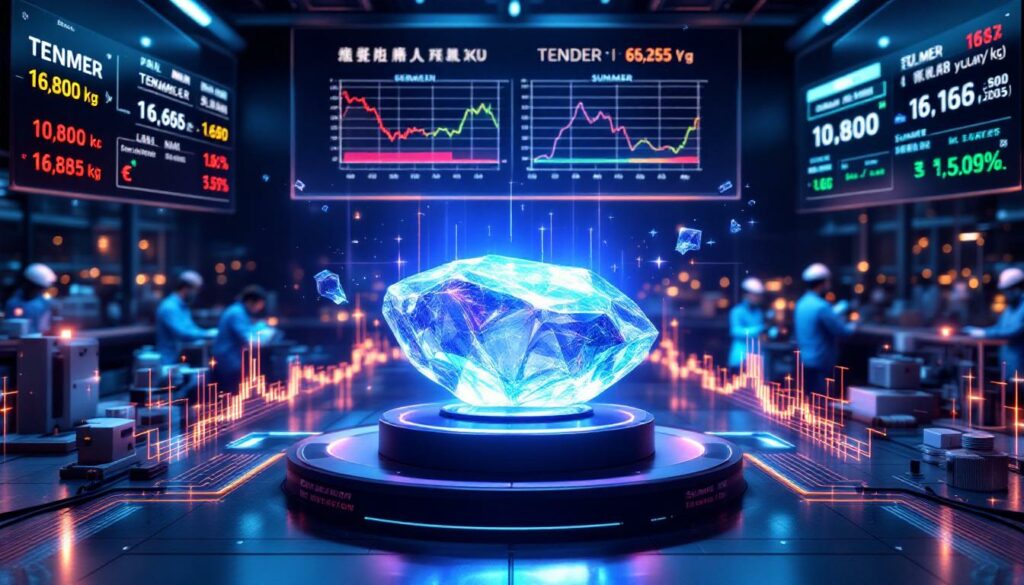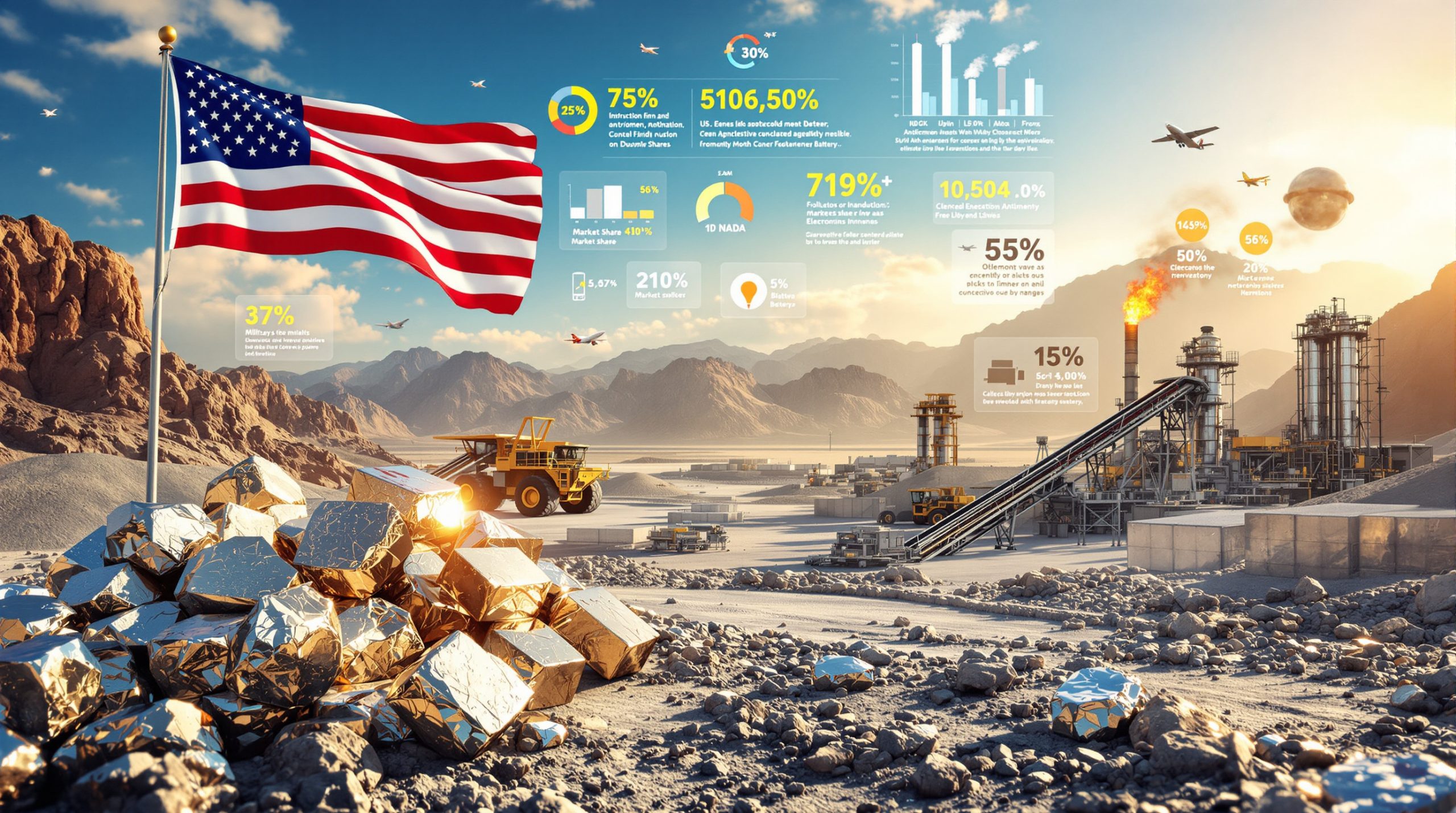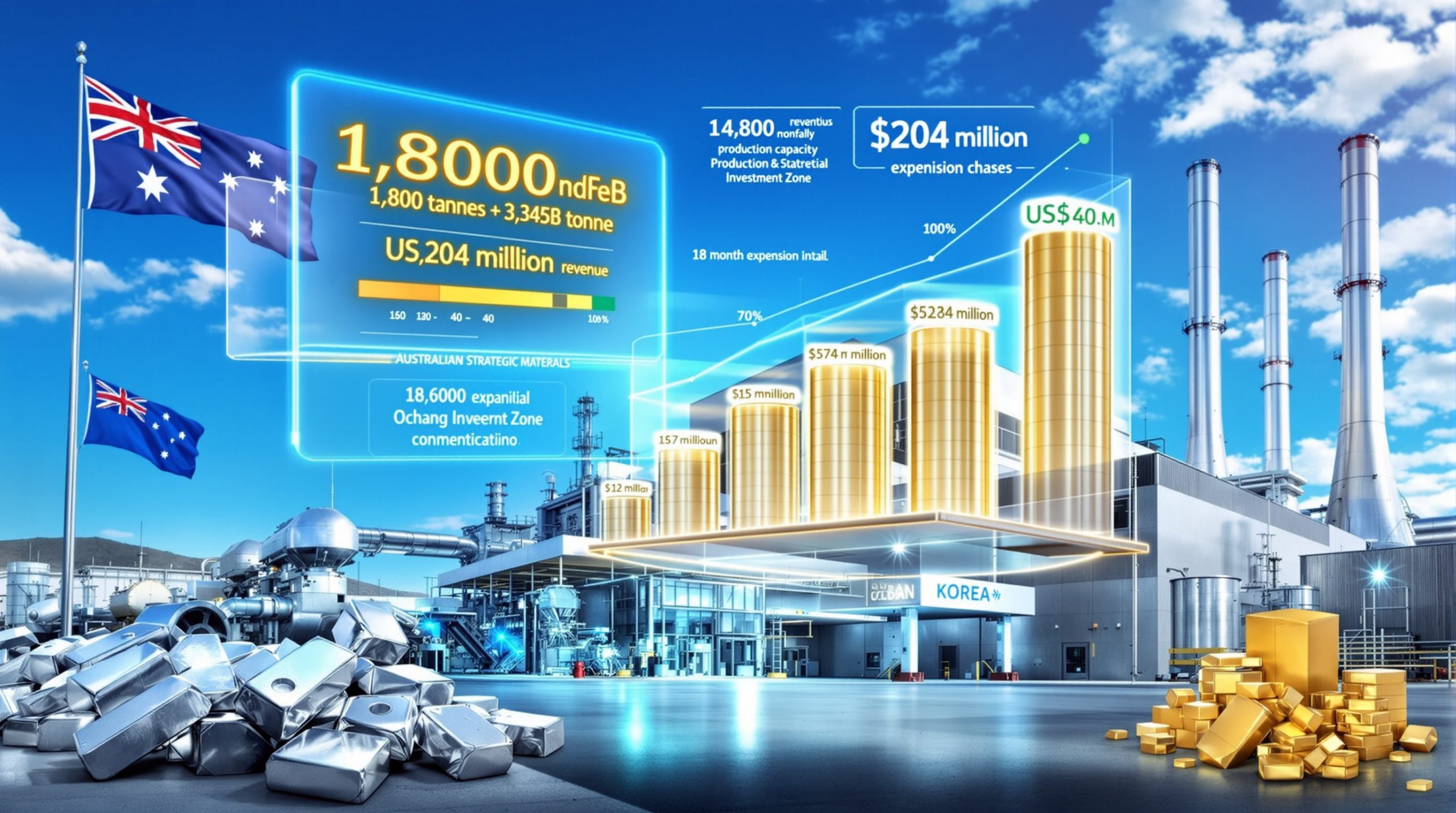Understanding the Germanium Market Dynamics in Mid-2025
The germanium market in mid-2025 presents a complex landscape characterized by price differentiation, supply constraints, and evolving buyer behaviors. As this critical industrial metal continues to play an essential role in high-tech applications, market participants must navigate the nuanced forces shaping its availability and pricing.
What is Causing Price Differentiation in the Germanium Market?
The germanium market is experiencing notable price differentiation despite overall stability in average pricing levels. This phenomenon stems from divergent supplier strategies and regional variations that create a fragmented marketplace where transaction prices can vary significantly.
Current Market Price Stability
The germanium market currently displays a paradoxical combination of price stability and differential pricing. According to recent market data, the average germanium ingot price holds steady at 14,750 yuan/kg, while germanium dioxide maintains an average of 10,100 yuan/kg. These benchmark figures have remained consistent despite opposing market pressures.
What makes this stability particularly interesting is that it exists alongside significant transaction price differences across regions and buyer types. The difference between the highest and lowest transaction prices can reach 15-20% for the same grade material, creating opportunities for strategic purchasing.
"The market displays remarkable resilience at its core pricing levels, yet exhibits flexibility in transaction-level negotiations," notes a recent industry analysis from Shanghai Metal Market (SMM).
This price variation creates both challenges and opportunities for market participants who must navigate a landscape where the quoted price may vary substantially from one supplier to another.
Supplier Strategy Divergence
A key driver of price differentiation is the strategic divergence among germanium producers. Some manufacturers have adopted aggressive pricing to compete for downstream orders, offering both germanium dioxide and ingots at rates below market averages. These suppliers prioritize market share and cash flow over margin preservation.
Conversely, other producers maintain firm price positions, refusing to budge on their established rates. These companies typically have stronger balance sheets or strategic customer relationships that allow them to prioritize price stability and market price premiums.
Perhaps most notably, manufacturers implement substantially different pricing strategies depending on whether they're selling to end-users versus trade partners:
- End-user pricing tends to be more favorable with longer payment terms
- Trade partner pricing often includes premiums and stricter payment conditions
- Volume-based pricing tiers create additional differentiation within each category
This strategic fragmentation is evident in recent market activities. For example, Guangxi Yusheng Germanium Industry's tender offers 800kg of germanium dioxide starting at 10,800 yuan/kg and 500kg of zone-refined germanium ingots at 16,200 yuan/kg – both above market averages, demonstrating their position as a premium supplier.
The pricing divergence creates a complex environment where buyers must carefully evaluate not just the quoted price, but also supplier reliability, material quality, and delivery terms.
How Are Supply Dynamics Affecting the Germanium Market?
Despite price variations across the market, germanium continues to face supply constraints that prevent significant price deterioration. The interplay between resource availability challenges and upcoming supply developments creates a dynamic that supports price stability despite competitive pressures.
Resource Availability Challenges
One of the most striking aspects of the current germanium market is the persistence of resource tightness despite varied pricing strategies among suppliers. This supply constraint serves as a counterbalance to competitive pricing pressures, preventing significant price erosion.
End-users have adapted to this environment by implementing a dual-purchasing approach:
- Securing available low-priced materials when possible
- Simultaneously purchasing higher-priced inventory to ensure supply continuity
This bifurcated procurement strategy reflects the priority placed on supply security over cost optimization. Material availability, rather than price, has become the primary concern for many buyers who cannot risk production disruptions.
The germanium recovery cycle also contributes to supply constraints. Unlike more abundant metals, germanium is primarily obtained as a byproduct of zinc processing and coal ash extraction. Production cannot simply be ramped up in response to demand signals, creating structural limitations on supply flexibility.
"In today's germanium market, having reliable supply chains often trumps securing the absolute lowest price," explains a procurement specialist from a major optical fiber manufacturer.
These supply dynamics create a situation where even manufacturers offering discounted prices cannot significantly undercut the market without risking their own supply chain stability.
Upcoming Supply Developments
While resource tightness persists, several upcoming supply developments may influence market dynamics in the near term. Most notably, Guangxi Yusheng Germanium Industry has announced a tender offering 800kg of germanium dioxide and 500kg of zone-refined germanium ingots.
This tender includes specific parameters that provide insight into market conditions:
- Competitive bidding for germanium dioxide starts at 10,800 yuan/kg
- Zone-refined germanium ingots begin at 16,200 yuan/kg
- Delivery deadline is set for July 15, 2025
- Minimum bid quantities are 300kg for dioxide and 200kg for refined ingots
The premium pricing of these tender offers (compared to market averages) suggests the supplier anticipates continued strong demand despite summer seasonal factors. The delivery deadline creates a near-term supply opportunity that may temporarily alleviate some market tightness.
Other potential supply developments include increased germanium recovery from recycled materials, particularly from decommissioned solar panels and optical fibers. This secondary supply stream remains small but is growing in significance as sustainability considerations and critical minerals energy security concerns drive investment in recycling technologies.
What Factors Are Influencing Buyer Behavior?
Buyer behavior in the germanium market reflects the complex interplay between seasonal demand patterns, segment-specific needs, and strategic inventory management. Understanding these dynamics provides insight into how market participants are navigating the current environment.
Seasonal Demand Patterns
The germanium market experiences seasonal fluctuations that influence buyer behavior throughout the year. As the summer season approaches in mid-2025, market participants anticipate potential shifts in procurement patterns:
- Reduced procurement enthusiasm is typically observed during summer months
- Increased supplier shipments as manufacturers seek to reduce inventory
- Cash conversion priorities leading to more competitive pricing
- Temporary slowdowns in certain end-use applications
These seasonal patterns create a rhythm to market activities that experienced buyers and sellers incorporate into their strategic planning. Summer typically represents a period of more cautious purchasing as many industrial activities slow and inventory management becomes a priority for both suppliers and consumers.
Manufacturers respond to these seasonal dynamics by adjusting their production schedules and inventory management strategies. Many increase shipments during this period to convert inventory to cash, which can intensify competition for available orders and potentially create short-term pricing opportunities for strategic buyers.
End-User Segment Performance
The germanium market serves multiple end-user segments with different demand profiles and purchasing behaviors. Current market data indicates varied performance across these segments:
Infrared applications sector – This segment continues to demonstrate stable procurement activity despite seasonal factors. Germanium's critical role in thermal imaging systems, particularly for defense, security, and industrial applications, creates consistent baseline demand that is relatively insensitive to short-term price fluctuations.
Optical fiber manufacturers – Demand from this segment remains consistent as telecommunications infrastructure development continues globally. Germanium dioxide serves as a vital dopant in the production of optical fiber, creating steady procurement needs that support market stability.
Emerging applications – New tender projects have emerged as potential demand catalysts, particularly in specialized electronics and photovoltaic applications. These projects often have specific material requirements that can create premium pricing opportunities for suppliers with the appropriate specifications.
Across these segments, buyers have adapted to market conditions by implementing mixed-price purchasing strategies. This approach allows them to balance cost considerations with supply security, ensuring continuous material availability while maintaining reasonable average costs.
How Might the Germanium Market Evolve in H2 2025?
As the germanium market moves into the second half of 2025, participants face continuing uncertainty about price direction and supply-demand balance. The current stalemate between competing market forces is likely to persist, though several factors may trigger shifts in the established equilibrium.
Price Outlook Factors
The germanium market currently exists in a state of fundamental stalemate, with opposing forces creating difficulty for prices to move significantly in either direction:
Factors supporting price stability or increases:
- Persistent resource tightness despite varied pricing strategies
- Consistent demand from critical applications like infrared optics and fiber optics
- Limited new production capacity coming online
- Strategic importance driving inventory building by end-users
Factors creating downward price pressure:
- Aggressive pricing from some manufacturers seeking market share
- Seasonal reduction in procurement enthusiasm during summer
- Inventory reduction priorities among suppliers
- Cash conversion needs intensifying competition for orders
This tug-of-war between market fundamentals creates an environment where significant price movements in either direction face substantial resistance. The market indecision is likely to persist through the summer months as these opposing forces continue to balance each other.
"The market remains caught between supply constraints and competitive pressures, creating a pricing equilibrium that resists major directional moves," according to SMM market analysis.
The differences in the germanium market regarding pricing strategies are likely to continue, with some suppliers maintaining premium positions while others pursue volume through competitive rates.
Market Monitoring Priorities
Market participants should focus monitoring efforts on several key factors that could disrupt the current equilibrium:
-
Tender project results – The outcome of upcoming tenders, particularly the Guangxi Yusheng offering, will provide important signals about market direction. Strong bidding activity would suggest robust underlying demand despite seasonal factors.
-
Supplier policy divergence – Continued monitoring of the differences in supply policies between manufacturers remains essential. Any convergence toward either premium or discount pricing strategies would signal a potential shift in market direction.
-
Seasonal demand shifts – The actual impact of summer seasonality on procurement activity will be a critical indicator. If demand proves more resilient than anticipated, the market could tighten further despite seasonal expectations.
-
Inventory reduction strategies – How aggressively suppliers pursue inventory reduction will influence near-term availability and pricing. Excessive inventory liquidation could temporarily pressure prices despite underlying supply constraints.
The germanium market's relatively small size and strategic importance create conditions where specific events or decisions by key players can have outsized impacts on overall market dynamics. This makes vigilant monitoring of these factors essential for market participants.
FAQ About the Germanium Market
What applications drive germanium demand?
Germanium demand is driven by several high-tech applications that leverage its unique properties:
-
Infrared optics and thermal imaging systems – Germanium's transparency to infrared radiation makes it essential for night vision systems, security cameras, and industrial inspection equipment.
-
Fiber optic communication networks – Germanium dioxide serves as a critical dopant in the production of optical fibers, enhancing signal transmission capabilities.
-
Semiconductor manufacturing – Silicon-germanium (SiGe) alloys are used in high-speed integrated circuits and other electronic applications.
-
Solar cell production – Germanium substrates are used in high-efficiency multi-junction solar cells, particularly for space applications.
-
Catalyst applications – Germanium serves as a catalyst in certain polymerization processes, creating specialty plastics and other materials.
These diverse applications create a complex demand landscape that responds differently to economic cycles, technological advances, and mining industry trends.
How does germanium pricing compare to other minor metals?
Germanium occupies a distinctive position among minor metals markets:
-
Higher value-to-volume ratio than many industrial metals, reflecting its specialized applications and limited availability
-
More volatile pricing than mainstream metals like copper or aluminum, due to smaller market size and supply concentration
-
Greater sensitivity to supply-demand shifts given the relatively small production volumes globally
-
Strategic importance driving premium pricing for certain grades required for defense and critical infrastructure applications
This profile creates pricing dynamics that often diverge from broader industrial metal trends, requiring specialized market knowledge to navigate effectively.
What factors could disrupt the current market equilibrium?
Several potential developments could disrupt the current market equilibrium:
-
New production capacity coming online, particularly from germanium recovery projects
-
Shifts in semiconductor or optical fiber manufacturing demand due to technological advancements or economic cycles
-
Changes in recycling rates for germanium-containing products as circular economy initiatives expand
-
Policy changes affecting critical minerals supply chains, especially regarding strategic materials like germanium
-
Technological substitution in key application areas if alternative materials can provide comparable performance at lower costs
These disruption factors highlight the importance of monitoring both market-specific developments and broader technological and policy trends that impact mineral economics insights.
How does germanium trading differ from major metals markets?
Germanium trading exhibits several distinctive characteristics compared to major metals markets:
-
Lower transaction volumes and market liquidity, creating potentially greater price impacts from individual transactions
-
Greater importance of direct supplier-customer relationships rather than exchange-based trading
-
Less standardization in product specifications, with different grades commanding significant price premiums
-
Higher price differentiation between market segments based on end-use applications and quality requirements
-
More opaque pricing information compared to exchange-traded metals, creating information asymmetries
These differences make germanium trading more relationship-driven and less transparent than markets for major industrial metals, placing a premium on market intelligence and understanding mineral deposit tiers.
Comparison: Germanium Market vs. Other Minor Metals Markets
| Characteristic | Germanium Market | Typical Minor Metals Markets |
|---|---|---|
| Price transparency | Limited, with significant variations | Moderately transparent with published indices |
| Supply concentration | Moderate concentration among few producers | Varies widely by metal |
| Demand drivers | Primarily tech and optical applications | Diverse industrial applications |
| Price volatility | Moderate with strategic buying buffering swings | Often higher due to supply constraints |
| Market size | Relatively small, niche market | Varies from small to medium sized |
| Trading mechanism | Primarily direct contracts and tenders | Mix of contracts and spot transactions |
Disclaimer: The germanium market analysis presented in this article reflects conditions as of mid-2025 and incorporates both established facts and informed projections. Market conditions can change rapidly, and readers should seek updated information before making significant purchasing or investment decisions.
Ready to Capitalise on the Next Mineral Discovery?
Discover real-time alerts on significant ASX mineral discoveries with Discovery Alert's proprietary Discovery IQ model, turning complex mineral data into actionable insights for investors in critical minerals like germanium. Visit our dedicated discoveries page to understand why major mineral discoveries can lead to exceptional returns, and begin your 30-day free trial today.




